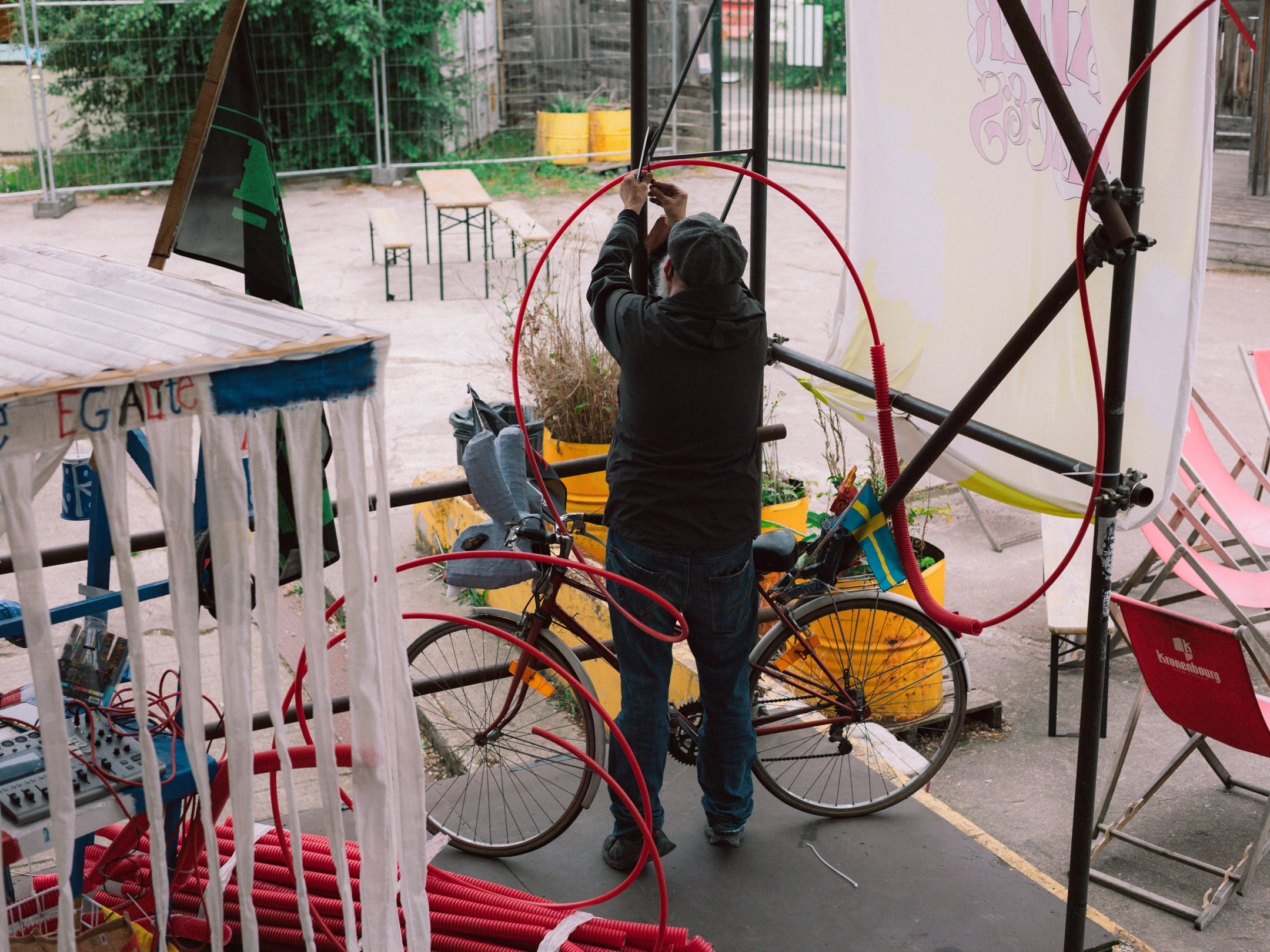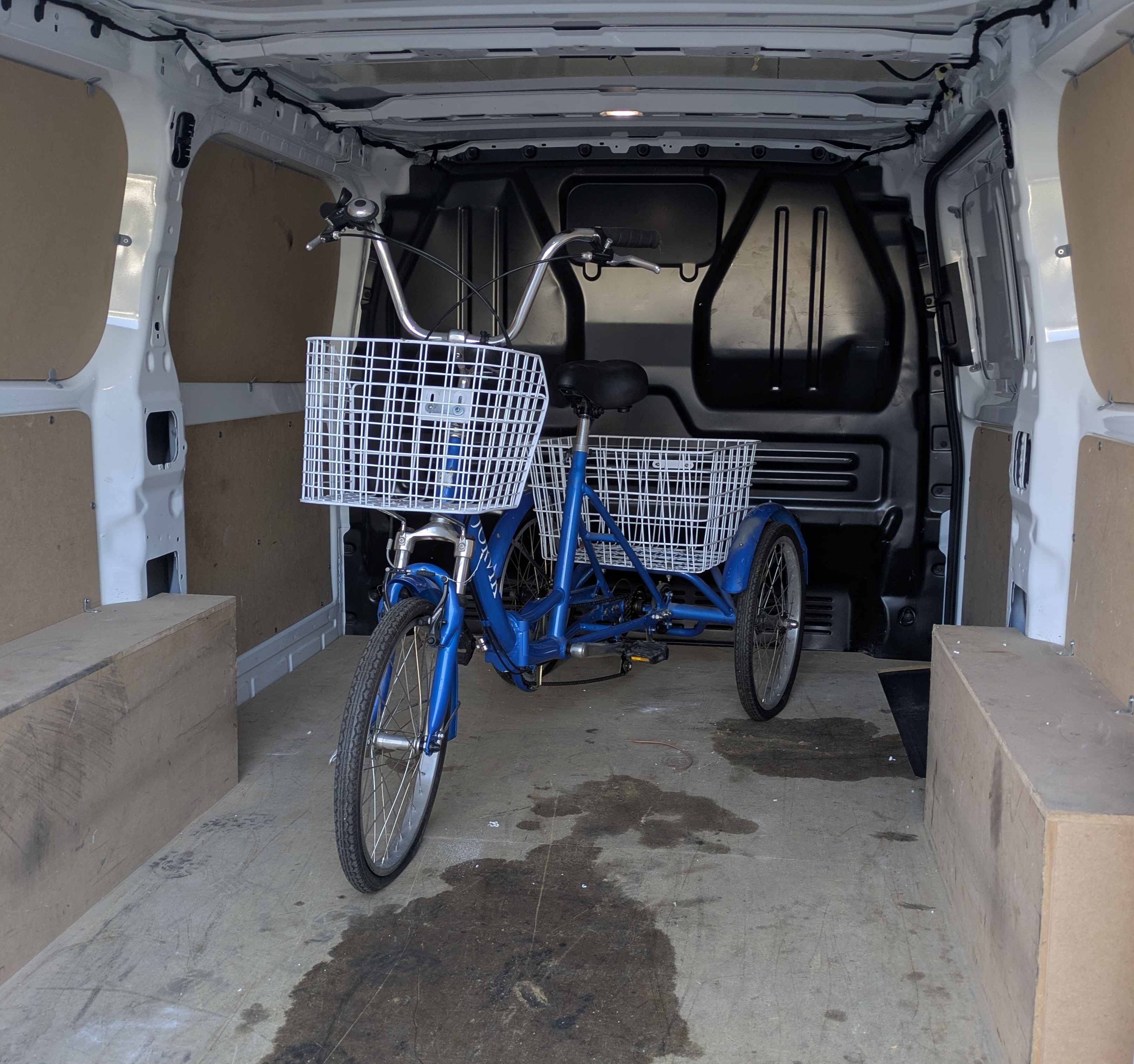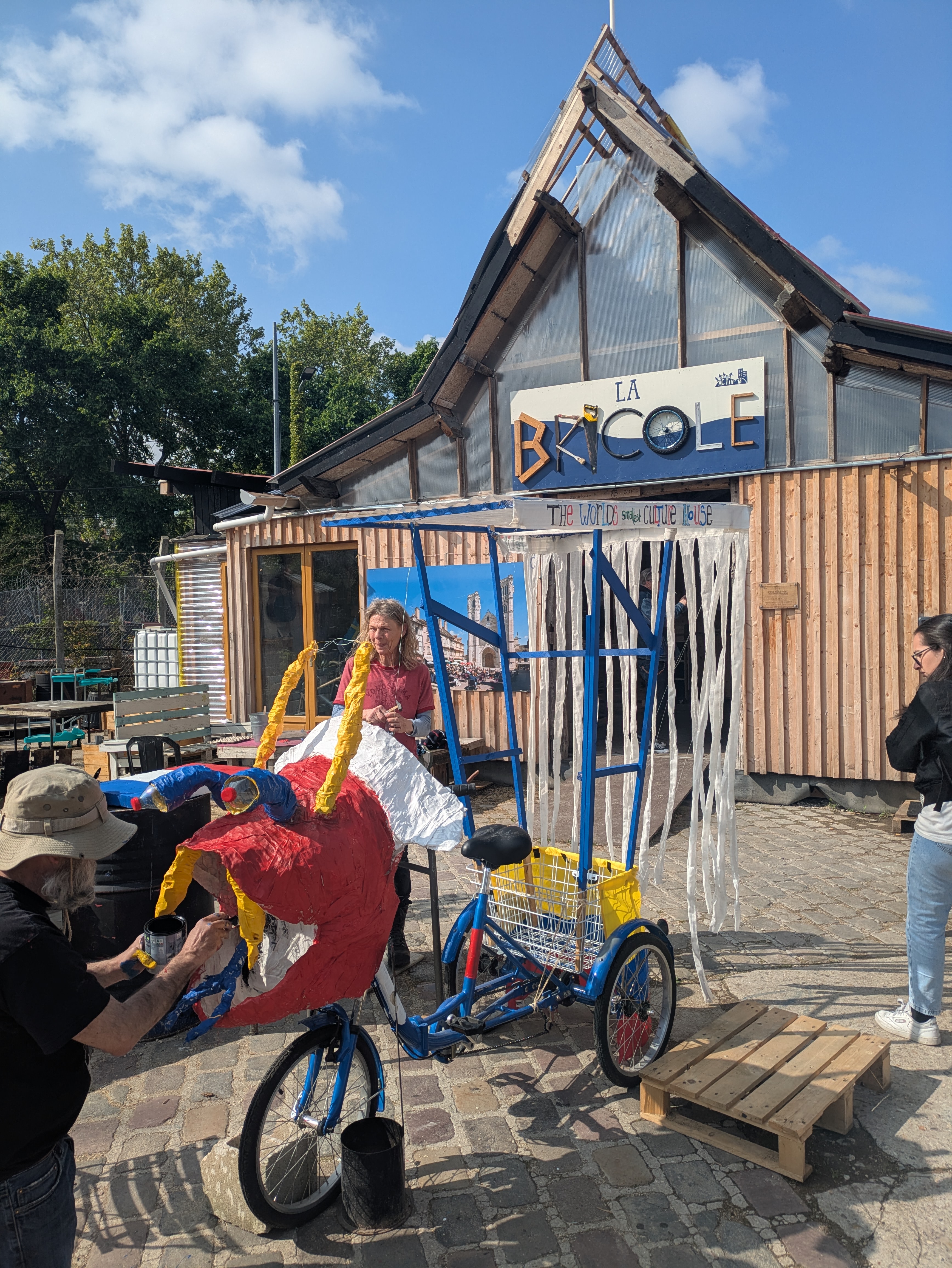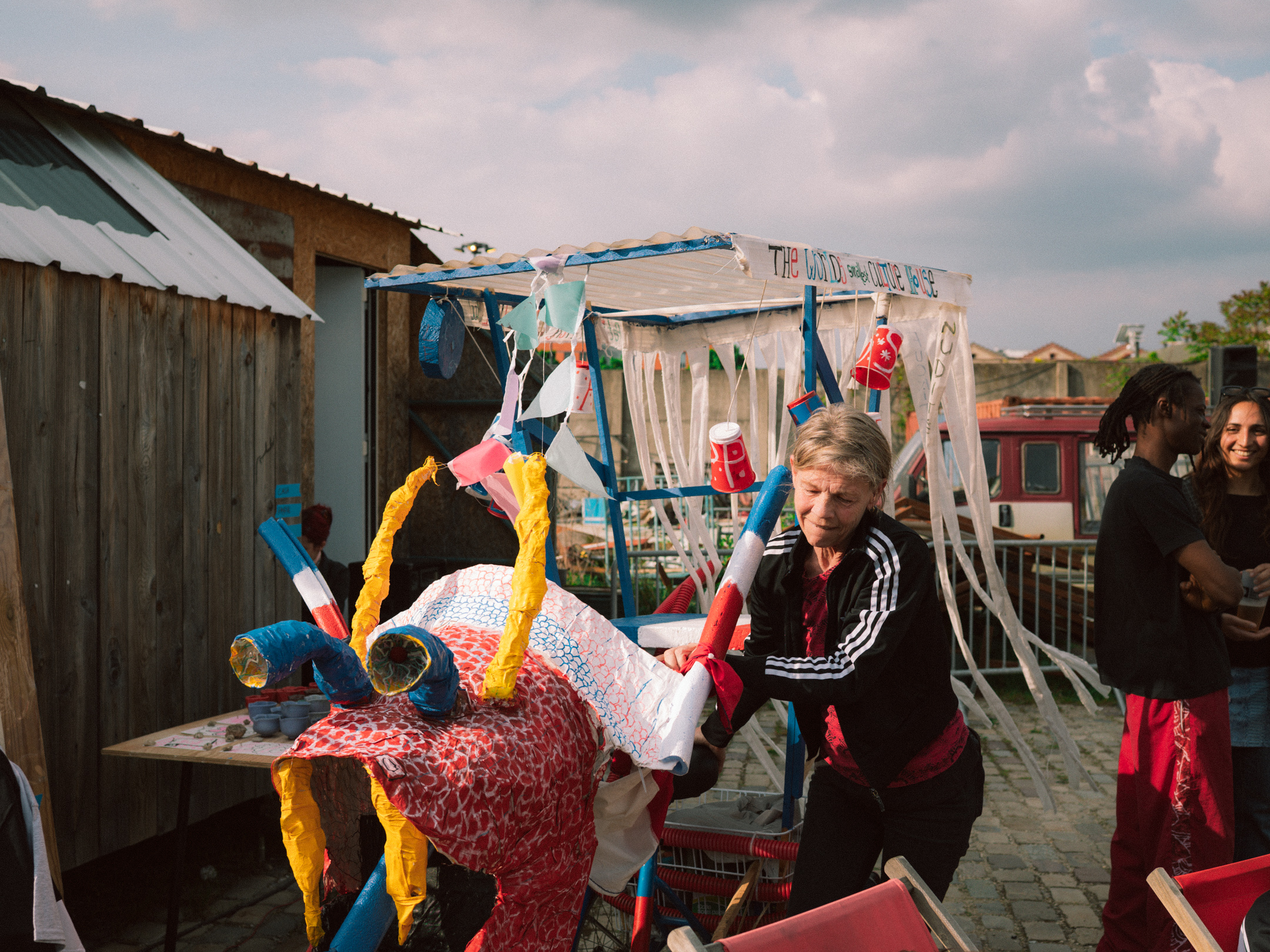World’s Smallest Culture and Radio House
- 30.06.25
- Prototype #1.2

Art can be created alone—but culture thrives in community.
As resources for non-commercial culture become increasingly scarce, we ask: how can we sustain cultural life without having control over a physical building? With this question in mind, we’ve set out to define the world’s smallest cultural place—and explore what it truly needs to exist.
Armed with a fleet of eye-catching bicycles and mobile equipment, we activate overlooked corners of the city. By transforming public spaces and underutilized semi-public commercial areas that lack formal cultural infrastructure, we bring culture directly to the people—lowering barriers to participation and minimizing the resources we consume.
Elements included in the prototype: a radio-bike designed with a tricycle and a classic bicycle
Number of people involved: 5
Competencies required: creative skills, construction
Partners: La Bricole - help in the construction of the prototype
Development time: 2 months
Estimated budget: 1000€
Materials: bike(s), wooden cleats, wallpaper glue, chicken wire, wold sheets, paints, radio set
Methodology & Templates
1.Drawing up specifications: activity, format, requirements
NGBG, one of the project partners, took on the specific task of developing this prototype, as they already have considerable experience in designing mobile projects. Together with the Alter-Places project partners, we drew up the specifications for this prototype, which is intended to house a radio activity.
Leveraging the expertise of the NGBG team, who are accustomed to work with bicycles, we opted to base the prototype on a tricycle and a bicycle. From this foundation, a support structure for the radio activity will be developed, along with an aesthetic enhancement of the entire unit to make the activity visible. Based on these choices, we then compiled a list of materials to source.
2.Purchasing or searching for materials
Based on this list, we began researching reused materials, which allowed us to collect a tricycle, a bicycle, some fabric sheets, and a radio set brought by NGBG. This approach significantly reduced our environmental impact and kept costs down. Following this, we purchased the necessary supplies for crafting masks for the bikes, specifically paint, chicken wire, brushes, and glue. It's important to note that major part of construction materials were either reused or second-hand, aligning with our commitment to sustainability and resourcefulness.

3.Building the prototype
The construction of the prototype followed a flexible and rapid process. The NGBG team, experienced in building this type of mobile project, approached the construction with a DIY (Do-It-Yourself) mindset infused with serendipity. This meant they weren't working from a rigid, pre-defined plan. Instead, they embraced various construction opportunities as they arose, adapting their design and methods based on the materials readily available to them. This agile approach is key to innovative projects, allowing for creative problem-solving on the fly.
Over three days, the NGBG team, with assistance from La Bricole, a fabrication space managed by Activ'18 within La Station - Gare des Mines, revitalized the bikes. They fabricated a support for the radio set and a protective cover using wooden battens. Additionally, they crafted unique "masks" for each bike using various elements found directly on site, further demonstrating their resourceful and adaptive approach to design and construction.

4.Use scenarios
This mobile and flexible prototype, integrating bicycles and a radio set, offers multiple usage scenarios for ACPs that face challenges accessing a permanent physical space and wish to continue being visible and interacting directly with the public in various environments. These scenarios are non-exhaustive and depend on the core activity of the organization using the device; they are simply proposals:
Rapid, accessible and low-budget response in case of non access to space: during crisis situations, this prototype can serve as an essential communication point for cultural activities, breaking isolation of cultural workers, and continuing to interact with the public
Nomadic cultural dissemination in public spaces: bicycles equipped with the radio can be deployed in parks, public squares, or at neighborhood events to broadcast music, cultural programs, interviews with local artists, or announcements about ACP activities. This allows reaching a wider and more diverse audience that might not necessarily frequent cultural venues.
Spontaneous and ephemeral cultural interventions: the prototype can be used for spontaneous artistic performances or DJ sessions in unexpected locations. The speed of deployment and low logistical footprint allow for great flexibility and responsiveness to opportunities in urban spaces.
Support for partner events: The device can be rent or made available to amplify the visibility of other cultural initiatives, local festivals, or markets by providing live media coverage or enlivening the atmosphere with music.
Community dialogue: the mobile radio can become a tool to initiate discussions with residents, collect their stories, their opinions on local cultural life, their suggestions for future activities.
Sound mapping of the city: the project can encourage participants to explore the city by recording ambient sounds, specific soundscapes, or interviews with residents. These recordings can then be broadcast via the radio, creating an evolving sound map of the territory.
